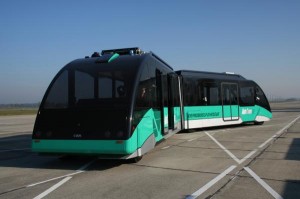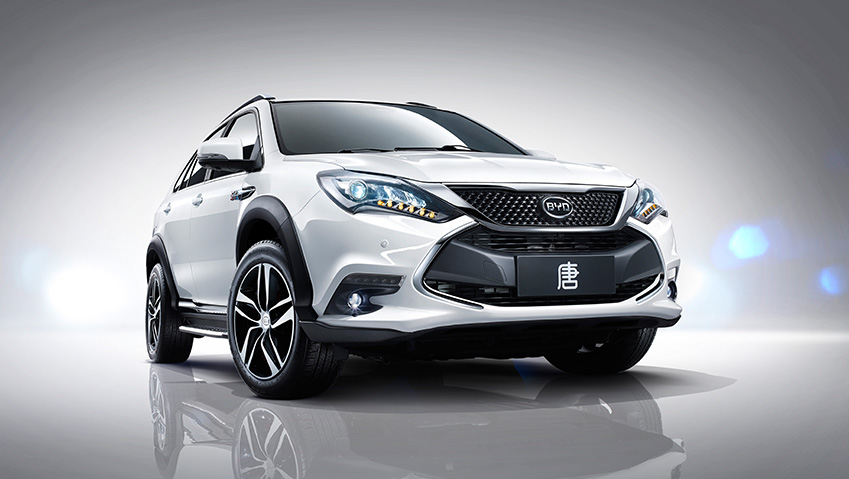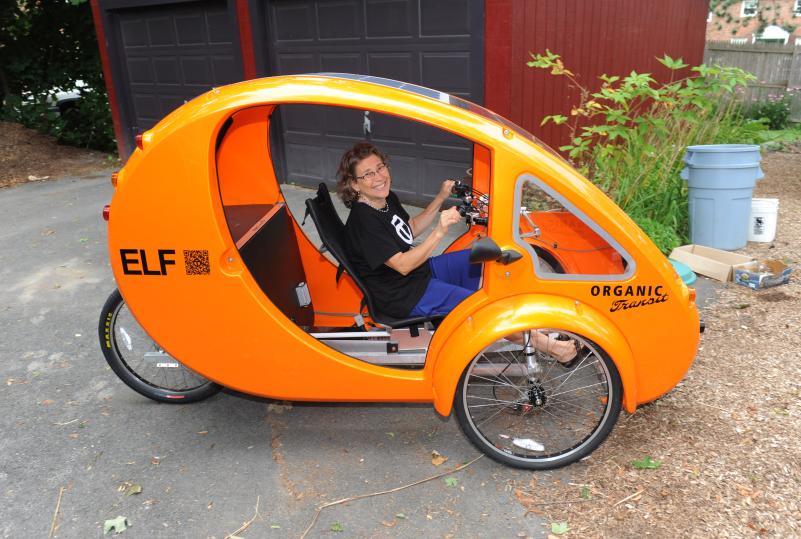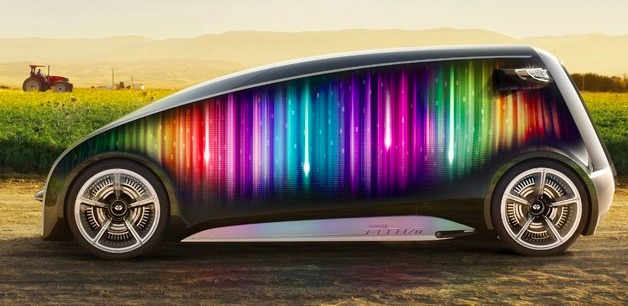 Electric and hybrid vehicles could take over the cities besides: cars, bicycles, buses and streetcars as new concepts for individual and local public transportation.
Electric and hybrid vehicles could take over the cities besides: cars, bicycles, buses and streetcars as new concepts for individual and local public transportation.
In the large-scale project “Fraunhofer System Research on Electric-Powered Mobility,” researchers are developing solutions for mobility of the future.
Whenever a bus stops and pulls away the passengers are the subject to the smell of exhaust fumes as a scenario that should be soon an image of the past. The city traffic of the future will be different: buses will be vehicles propelled by electricity, hydrogen or a combination of hybrid propulsion methods. Among of these vehicles of the future is the AutoTram®. As long as a streetcar and as agile as a bus, it combines the benefits of both vehicles: with no need for rails or overhead contact lines, the “bustrolley” rolls on rubber tires and follows a simple white line on the road surface.
In the large project “Fraunhofer System Research on Electric-Powered Mobility”, it serves as a research platform. The vehicle is part of the overall Fraunhofer System Research effort, a research cooperative involving 33 Fraunhofer institutes. “We want to offer workable solutions and advance electric-powered mobility in Germany. With our two research platforms — the AutoTram® and a passenger car — we are demonstrating that the new components can interoperate well,” says project coordinator Professor Holger Hanselka. The German Federal Ministry of Education and Research (BMBF) is funding this project with a total of EUR 44 million from the Economic Stimulus Plans I and II for a period of two years. The project is broken down into four areas of focus: vehicle concepts, energy generation, distribution and conversion; energy storage technology; technical system integration and social issues. After a year spent in extensive research, the first results are now available.
“Initial designs for the AutoTram® were created several years ago already at the Fraunhofer Institute for Transportation and Infrastructure Systems IVI in Dresden. This combination of bus and tram now presents our colleagues and us a perfect platform for testing new developments — not only in simulations but in the real world,” observes Dr. Matthias Klingner, director of the institute for the past five years. Installed in the vehicle, the new modules for energy storage, double-layer capacitors and coupling coming directly from the research laboratories can now prove their capabilities in the field.
Unlike cars, which remain parked for an average of 23 hours a day, buses and trams are in motion all day long and doesn’t leave much time to recharge the batteries. One solution approach for the AutoTram® involves fast-charge docking stations positioned at the stops along the route. Current can then be drawn at every third or fourth stop. The requisite amount of energy must be recharged in just 30 to 60 seconds at more than 1000 amperes and 700 volts. Accomplishing this in such a short period of time requires super-capacitors. Researchers are working to develop the modules required: for instance on energy storage units based on double-layer capacitors, on high-performance converters and on contact systems for the transmission of current. Unlike batteries, double-layer capacitors — also known as ‘supercaps’ — have a high power density. Those capacitors ensure that the charge can be quickly stored.
Dr. Ulrich Potthoff, department head at IVI, offers a vivid explanation on how the principle works: “Batteries take their time charging. Capacitors, on the other hand, quickly take up the charge, like a small bathtub with a large spigot. However, they can only store a smaller quantity of energy.” Engineers are working on linking the battery system with the capacitors for this application in city traffic. “We’re developing dual storage units and testing their features in combination with other storage types and fuel cells” Potthoff adds. His colleagues at the Fraunhofer Institute for Integrated Systems and Device Technology IISB are contributing innovative developments for the power-electronic components, such as a direct voltage converter that adjusts the voltage level. These DC/DC converters are needed to link the double-layer capacitors with the drive train. Also decisive in this regard are materials that can withstand transmission of high levels of current. The surface of the contacts must be very stable and wear-resistant. In this regard, researchers at the Fraunhofer Institute for Material and Beam Technology IWS came up with suitable materials and the methods for processing them.
“These newly developed concepts must be coordinated with one another so they will harmonize with all of the other components. At IVI, we are incorporating the modules into the overall AutoTram® system and configuring the interfaces” Potthoff explains. This also includes the lithium-ion battery systems for electric vehicles. This is an effort to which experts at 11 different Fraunhofer institutes have been working flat out to advance — not an easy task, as the batteries and electrical systems are subject to extreme demands. These systems need to be safe, durable and efficient because they are being developed both for passenger vehicles and for the AutoTram®. Usually, the battery system consists of several hundred cells, and these do not always discharge at the same rate. And if individual cells should fail or no longer deliver the intended performance, this can take a toll on the entire battery. The individual cells are controlled using an overarching energy-management system. Project manager Dr. Matthias Vetter of the Fraunhofer Institute for Solar Energy Systems ISE in Freiburg, who coordinates the project, explains the basic principle involved: “Within a few fractions of a second, the electronics measure the current, the voltage in the individual cells and the temperature and use these parameters to derive values for the battery’s state of charge and health. This way, a determination can be made for each cell as to whether there are any threats of overload, deep discharge, excessive heating or premature aging.”
Teamwork is the key to success here: In this case, the four institutes — LBF, ISC, IWM and IVI — are contributing their experience to the effort to develop a new type of magnetorheological engine-generator coupling. Here is how this electrically switchable coupling works: under the influence of a magnetic field, an integrated fluid alters its consistency from liquid to solid. This reaction can be harnessed to provide precision control of the coupling process. Equipped with highly efficient electric drive motors and control units as well as high-performance batteries and supercapacitors, the AutoTram® can transport its guests with nearly zero emissions.



